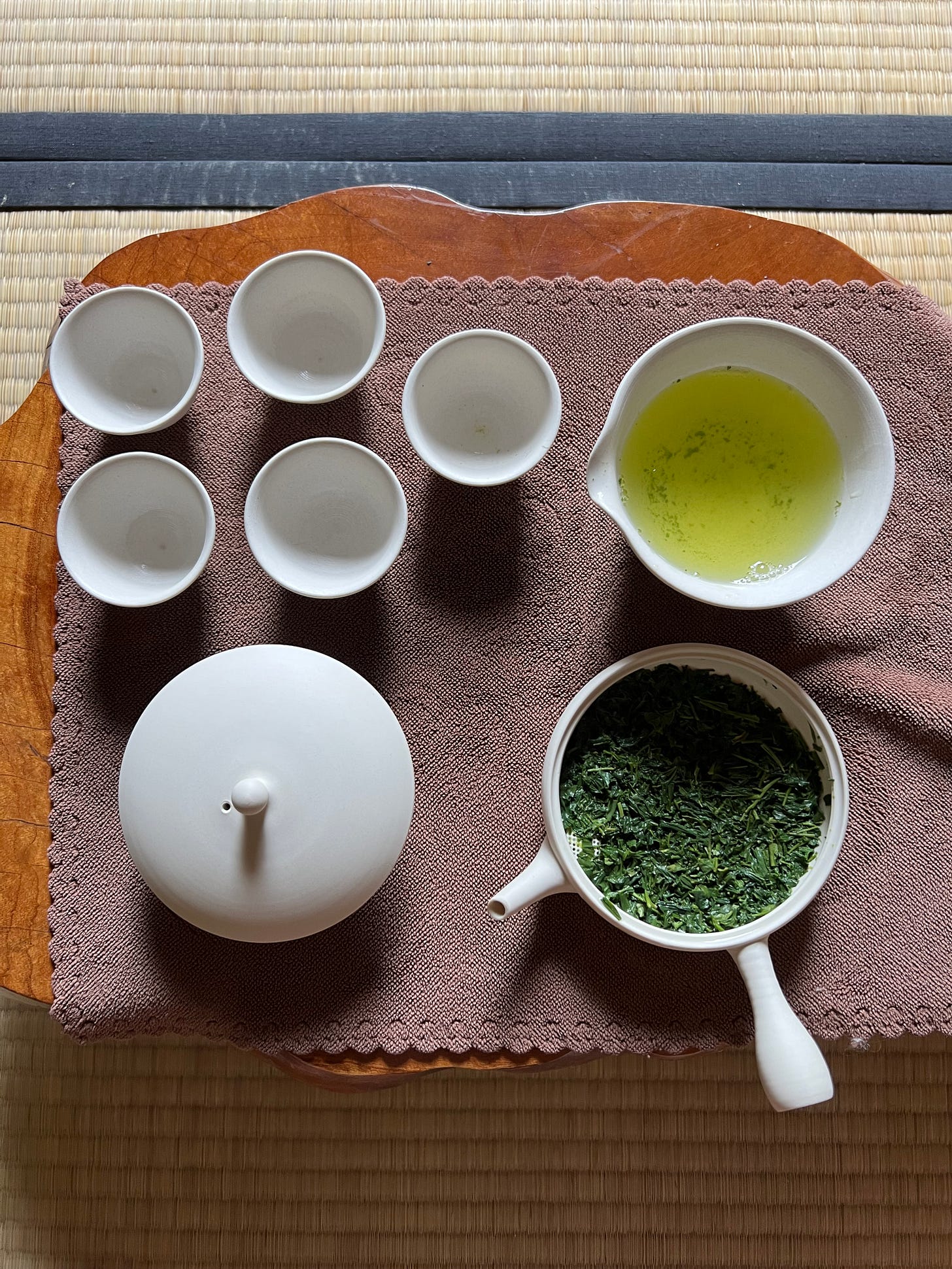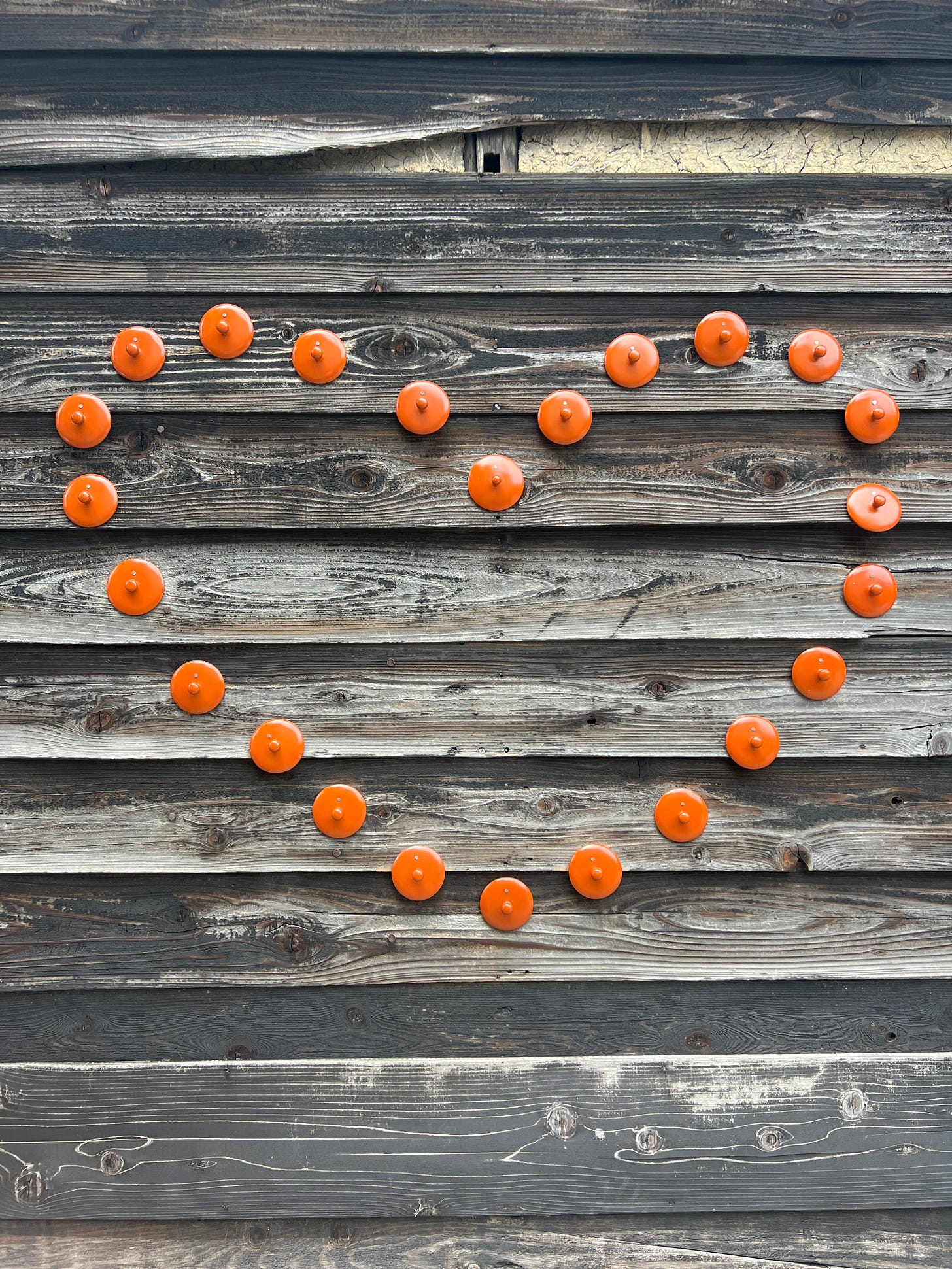A Trip to Tokoname (aka The Earthship Depot): "If Kyusus Were Guns"
In which the works of Maekawa Junzo, Yamada Yutaro & Umehara Shoji playfully forge the feeble moat I constructed to protect me from tea ware collecting insanity.
The year was 2015. I had just returned from a stint living in Medellín, Colombia, where good tea was tougher to come by and I’d never been so uncertain about the future. I could have gone anywhere. I almost went everywhere.
Instead, I found a back house in Exposition Park. To stay sane in my beloved Los Angeles for the foreseeable future I told anyone who would listen that only two things were required:
1. A record player.
2. A good tea pot.
My dear cousin—and loyal patron of these fritzy dispatches—satisfied the first requirement. Vinyl was gleefully spinning by the night of 30th birthday. My mother, determined to keep me nearby after watching me spend much of my 20s abroad, satisfied the second.
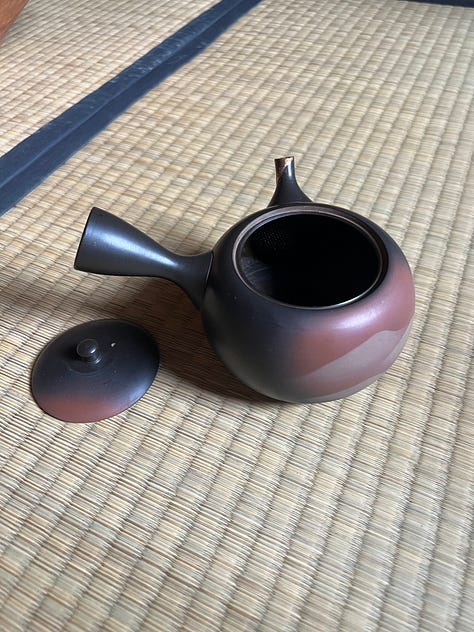
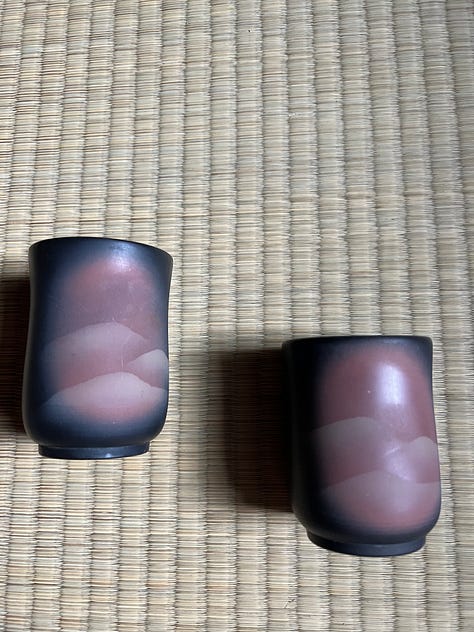
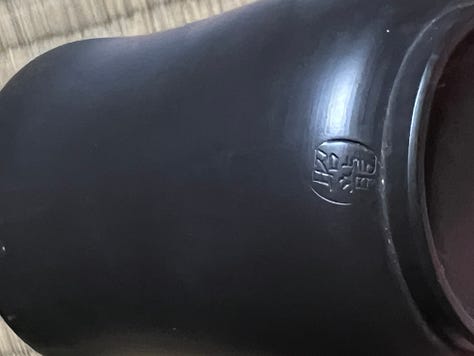
The cost of the tea pot was $150, marked down from $225. The vendor was the now defunct but very vital to my tea education US-based website (and formerly brick and mortar store in Massachusetts) Tea Trekker. The artist was Shoryu (aka Umehara Shoji). In the box were two cups and a side handle tea pot—or kyusu—from Tokoname, Japan.
Tokoname. A word that sounds like a dance move. A place that reads like a riddle to be solved before one is permitted entry. A concept that I could rub every time I went to a decent tea shop and fiddled with their wares like Aladin with his lamps.
With the most rudimentary research this earliest budding student—or even the casual passerby—of the tea game knew those eight letters like it spelled out a fact of the universe. If planet earth is—as I believe—nothing more than solid clay shaped into a tea pot base, waiting for its filter, top, handle and spout, then its crust probably has a stamp with these two characters imprinted on it somewhere: 常滑.
And before I go any further, the latest issue of Global Tea Hut Magazine (Spring 2023) contains a nice primer on how Tokoname came to be known for tea pots after masters from Yixing in China came to teach them the trade, which coincided with the development of senchado (or the sencha tea ceremony), but that’s, as Burna Boy might say, another story.
And it is here I must ask, dear readers, who among you is coming with me to find out where these letters are carved?
Hypothesis: it’s probably beneath the face of the beckoning cat for which the ceramic town—the oldest and most famous of Japan’s famous pottery kilnvilles—is most easily identified in our modern times.
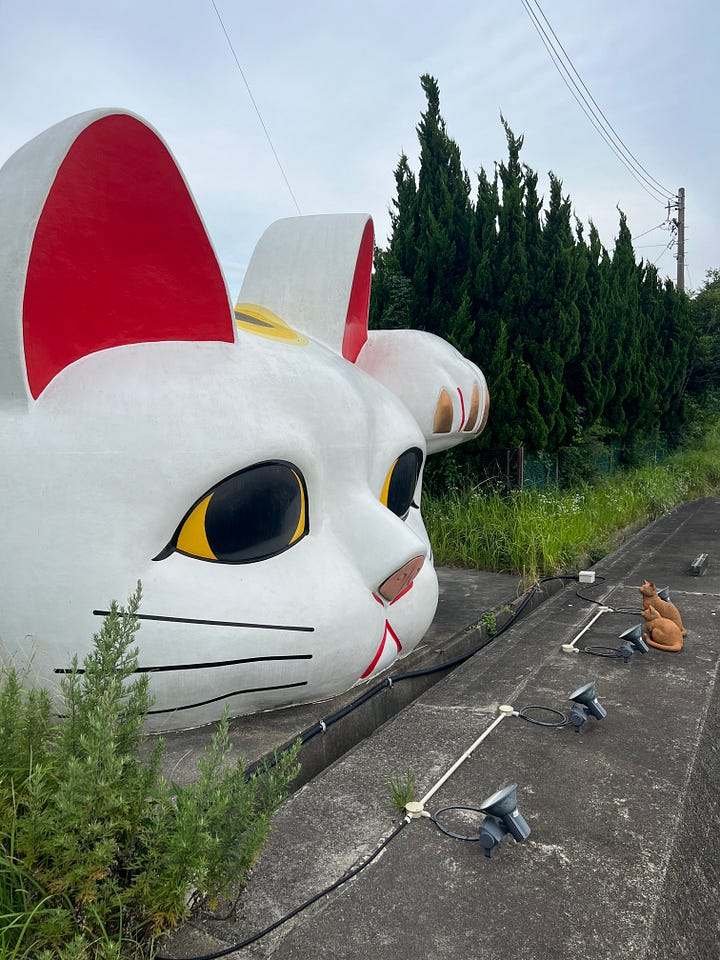
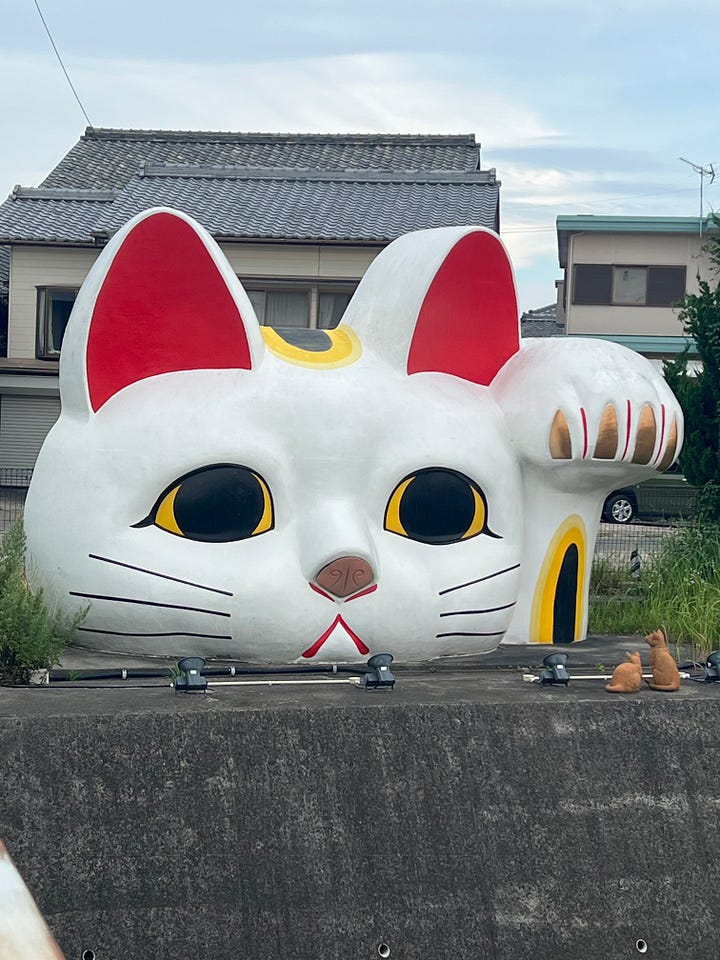
I know because I asked said cat over the weekend during my first trip to Tokoname. The giant cat didn’t exactly spill the beans but silence—and trust me as soul who charges by the word—says far more than my most anguished-over paragraph assemblages.
And so, I traveled to Tokoname like someone chasing all the highs that holding that first teapot in my hands, hoisting it above a cup, watching the various shades of green pour out of it, brought me. Or like a child asking his mother where babies come from. Or like a devotee would Mecca or Međugorje or Mount Sinai. My heart was pumping to the same beat as it did when I went to the ruins of Highbury in North London and the Graffiti Hall of Fame in Harlem.
Eight years of Tokoname use (or, dperhaps, neglect) made me no expert. I was reckless. I’m still, sometimes, reckless. Mistakes were made then and mistakes are made now. Different mistakes, maybe, but mistakes all the same.
Back then, I may have known better than to use flavored teas—which I didn’t like anyway—in such a pot but seeing how it was my only pot worthy of any respect, I still managed to convince myself that a black tea or an oolong tea here or there would do it no harm. That may have been true if I’d been diligent with cleaning after use.
As it happened, I did not—and I won’t belabor my pour teapot hygienic practices here—but suffice it to say, I did not care for it as I should have (especially as such a precious gift from my mother). Which is probably why I eventually broke the tip—arguably the most important part—and had to enlist the help of my better half in kintsugi-ing it back to life. But it never worked the same and so it has sat with my other wounded but golden tea soldiers in the alcove of my Kamakura tearoom.
As of today, though, it has been joined by other teapots of immeasurable beauty and inconceivable skill. In other words: other Tokoname kyusu teapots.
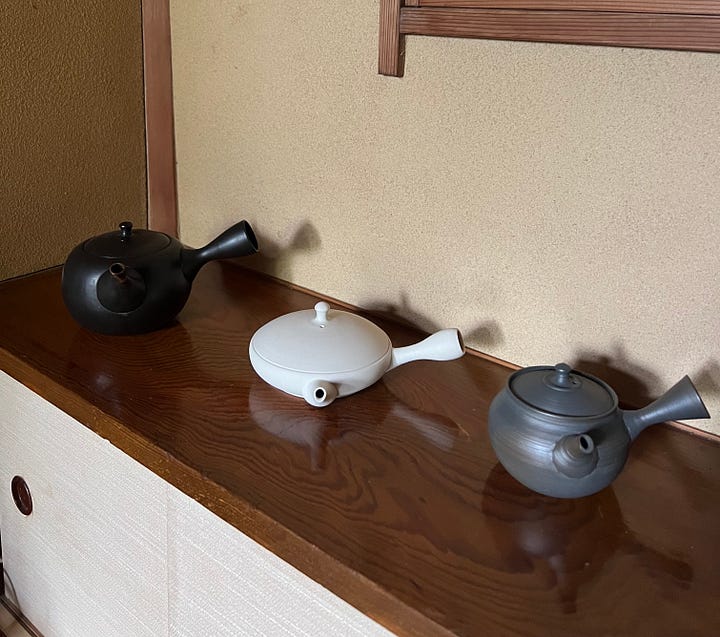
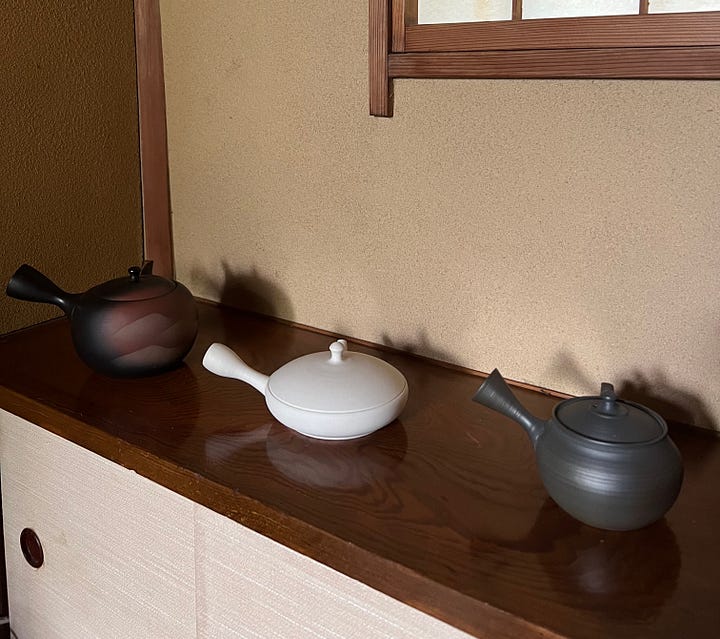
And how.
I confess that I had been more eager to get to Tokoname than I had been to tour the tea fields of Shizuoka in that day that proceeded it—which had been the original driving force behind the weekend road trip West. To drive from Kamkaura through Shizuoka and onto Aichi—where Tokoname sits in bay just below that Houston, Texas of Japan known as Nagoya—is like driving from Los Angeles upstate toward the Bay Area if only you tilted it on its side.
And so it was that I arrived with intent to a town that was once so full of pottery kilns firing at all times that even the birds turned black with soot.
I wanted a flat kyusu for gyokuro. I got a white one from the impressive collection at Isobe—which had been recommended by both Florent at Thes Du Japon and the homie Betana Kun at A.Drop —and later, I got the yuzamushi (water cooler/pitcher) and cups to match.
How could I not?
I sought out father-son-wife studio of the artists Maekawa—Junzo makes the smaller pieces (teapots, cups, yuzamushi, plates, bowls), while his father, Kengo makes massive pieces like the barrell-sized urns-shaped ovens for Japan’s recent streetside-cooked sweet potato boom (like this one which he made for a vendor here in Kamakura). His wife, Taeko, makes unreal white/blue color waves pieces.
We walked in on Junzo making a batch of the burnt goldish black kyusu teapots that are sold at places like Kettl and he was gracious with his time. He made us some casual gyokuro (a blend of leaves from several parts of Japan, including Shizuoka and Uji) out of a classic, flat red clay kyusu that he had repaired with silver (making it technically gintsugi instead of kintsugi). We spent a more than an hour pestering Junzo with questions, then he led us downstairs to where his Dad was working on the fourth of seven layers required for each massive sweet potato oven.

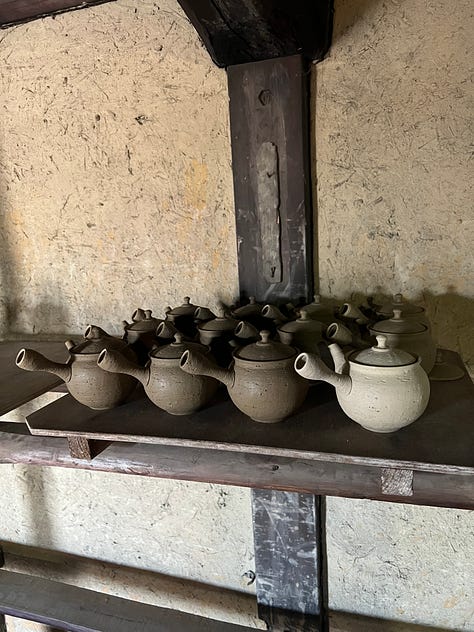
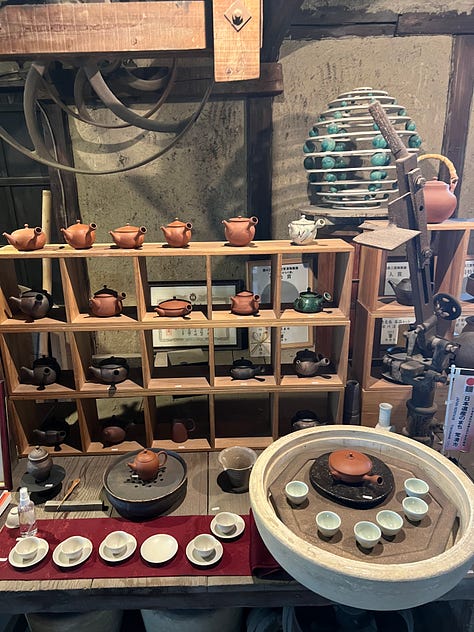
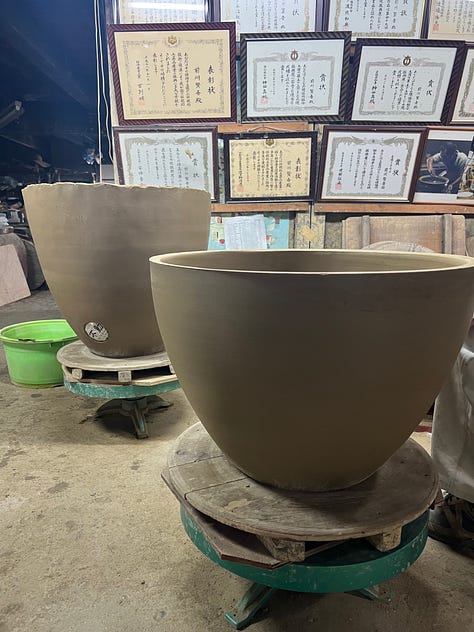
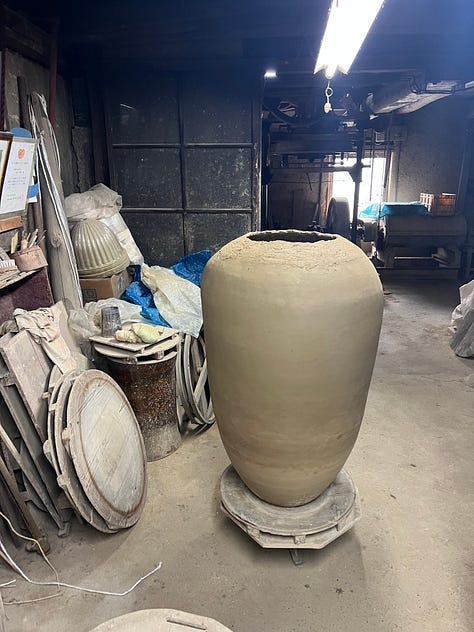
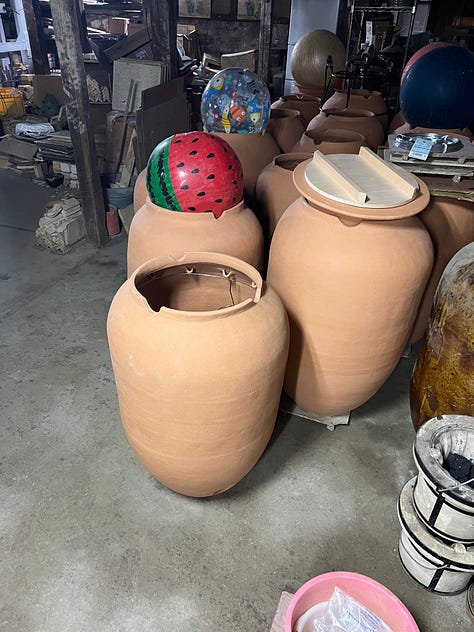
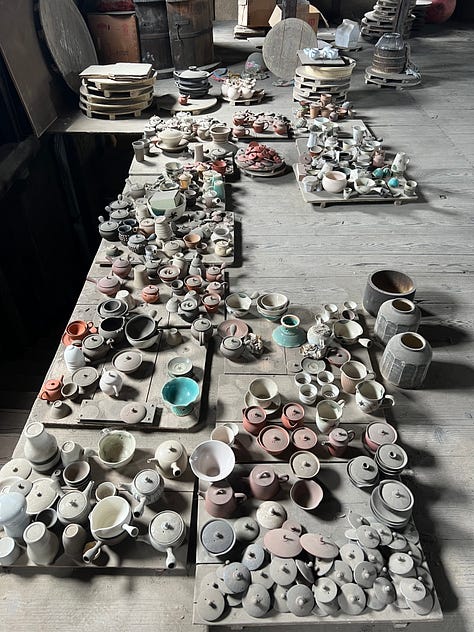

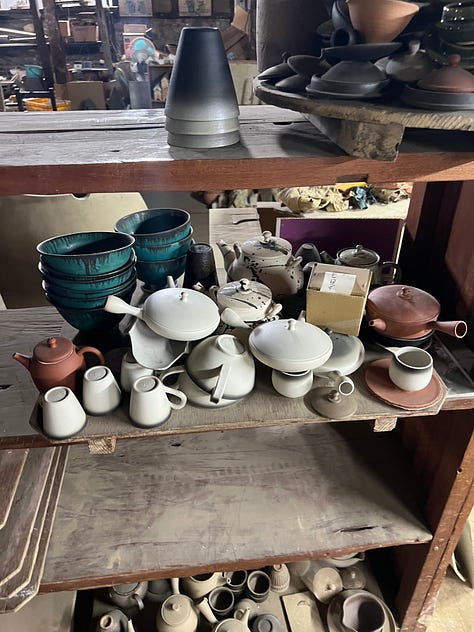
It was on this walk through the Maekawa studio that I noticed what seemed like an endless array of tea ware that had been tossed aside and was not for sale. Some of these were experiments (like a gun-shaped kyusu that actually had a trigger like function that stopped/started the water from pouring out of the spout and a bullet at the top of the tea pot) but most were imperfections. I could not spot any errors so Junzo grabbed a white flat kyusu that looked identical to the one I purchased the day before and showed me how the handle was off by a few millimeters, compromising the integrity of its long-term use durability. Thus, not perfect, thus, not good enough to wear the iconic Tokoname brand out in the real tea world.
It was then that I looked around and saw the thousands of ‘mistakes’ strewn on the grounds and shelves and nooks of the studio. Shards of ceramic. Spouts. Lids. Bodies. Pots that had been shaped but would never feel the delicate touch of tea leaves caressing their innards. Pots that would never be pots because they would never pot fully.
I could do a whole breakdown about the transpacific text thread with my dear friends at tea at shiloh, geeking out over pots. I could write ten thousand more words here about what else I saw on the walk around Tokoname—my saga to find and obtain my first featherlight Yamada Yutaro kyusu could be a novella on its own (shout out to the gentleman at morrina who helped me find it over at SPACEとこなべ and to Kamakura Club, where I first discovered his pots)—but instead I want to taste the blood of my own mistakes in my mouth.
I was once told that how you do one thing is how you do everything but that can only ever true for a single interval of time. I treat my tea ware differently now. It gets cleaned and dried. It’s not neglected.
After test driving—and cleaning and caring for—my two new Tokoname kyusu’s this morning, I went back to the old tea pot, the one my mom gave me, the one I made mistake after mistake on. It no longer makes tea that I would serve to anyone else. It’s a bit janky. The filter has seen clearer days, no matter how many bamboo bristles I pluck off my old matcha whisks to try to clean it, tiny hole by tiny hole. There is a certain kind of catchall residue that’s formed on most of its troughs and crevices. I know all this, and I still brewed up one of Osada En’s better Shincha’s in it this afternoon.
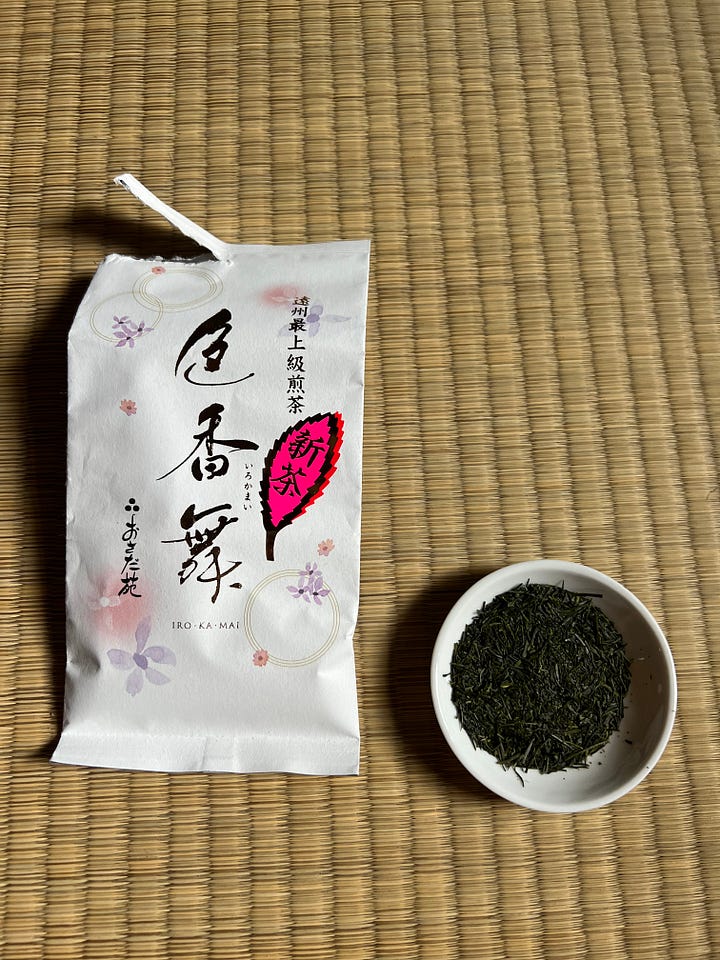
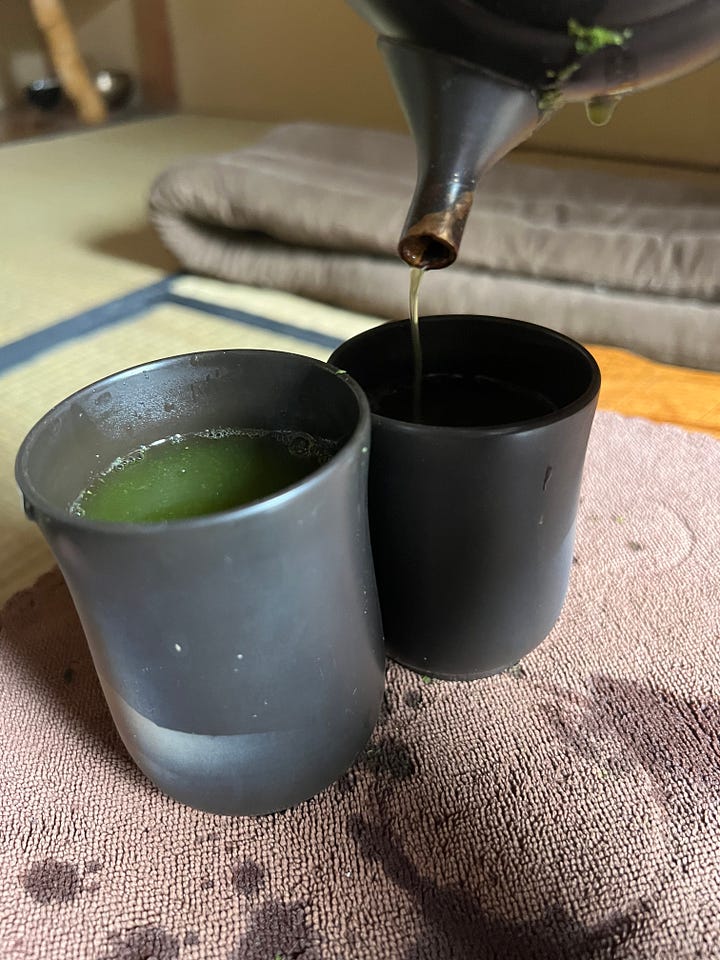
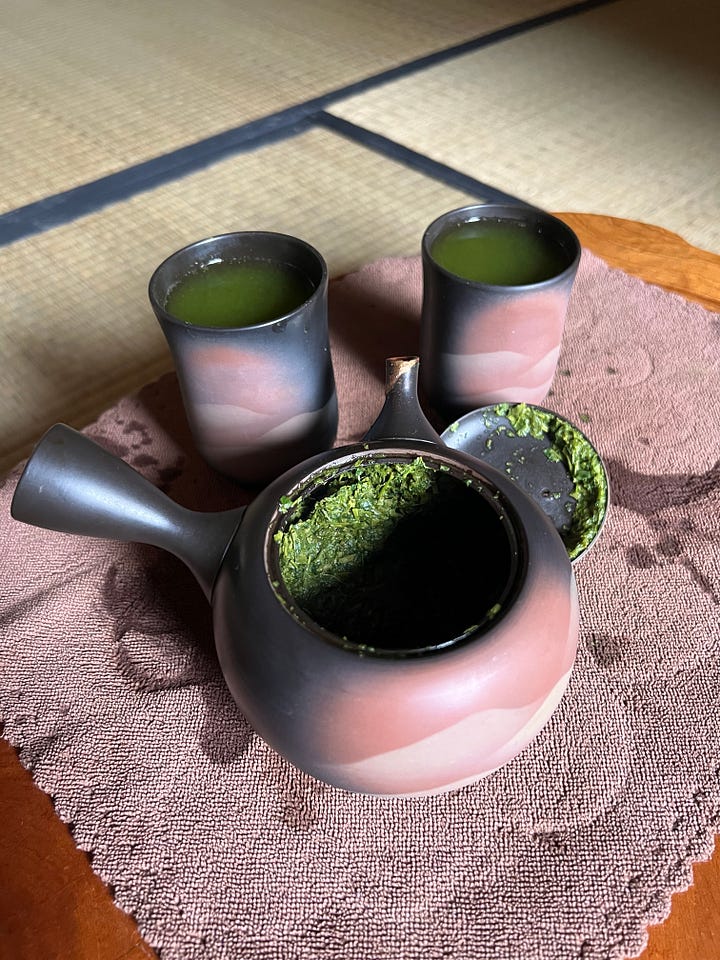

It tastes fierce and soft—a spiked bat hidden under a duvet. The clay still sounds like a singing bowl with the slightest brush of my fingers. The hills still remind me of a desert at dawn.
The tea does not taste as good as it could be but undoubtedly better than it was the first time I brewed sencha in it. A lot has changed in 8 years. How I do many things now is not how I did them then.
Maybe mistakes are just another Spanglish way of writing: my stakes. In other words, my stakes have been raised.
And so it is and so it will be. My mistakes now, it seems, evolve as I hurl further down the tea rabbit holes. I’m rather certain there is no bottom unless you count the hands of the clock.
As the nooks of the tea house in my mind are filled with ever more imperfect brews—stains on the walls, used leaves between the tatami mats—may all my mistakes carve grooves in me deeper than any tattoo gun can reach.
Mom, did you buy me a tea pot? Or a side-handled earthship?





